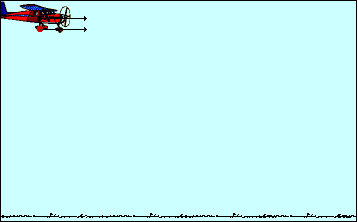Question #564a5
1 Answer
The time of flight is
The horizontal component of its displacement is
Explanation:
Here's what's going on after the object is dropped from the plane.
There are two distinct directions for which you must describe the motion of the object.

Horizontally, the initial velocity of the object will be equal to that of the plane. Moreover, since no horizontal forces act upon the object, its horizontal motion takes place at constant speed.
This means that the horizontal component of its displacment can be written as
Vertically, falls under the influence of gravity. This means that its vertical motion will be accelerated, the actual acceleration being equal to the gravitational acceleration,
The object starts at the height at which the plance cruises, and its initial velocity has a Zero vertical component. Moreover, it drops down in the same total time
Plug in your data and solve for
The object drops for a total time of 10 seconds. This means that the horizontal component of its displacement will be

